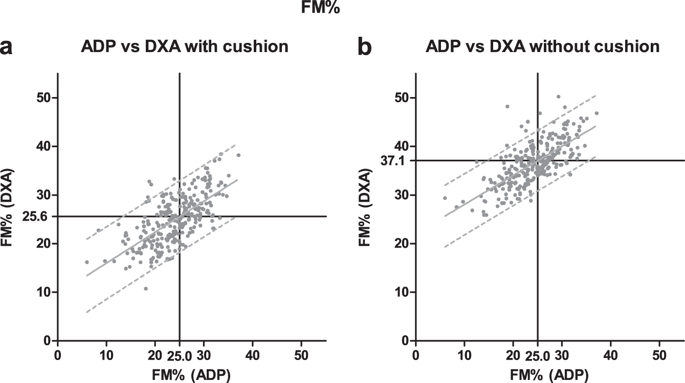当前位置:
X-MOL 学术
›
Eur. J. Clin. Nutr.
›
论文详情
Our official English website, www.x-mol.net, welcomes your feedback! (Note: you will need to create a separate account there.)
Longitudinal body composition assessment in healthy term-born infants until 2 years of age using ADP and DXA with vacuum cushion.
European Journal of Clinical Nutrition ( IF 4.7 ) Pub Date : 2020-02-13 , DOI: 10.1038/s41430-020-0578-7 Kirsten S de Fluiter 1 , Inge A L P van Beijsterveldt 1 , Wesley J Goedegebuure 1 , Laura M Breij 1 , Alexander M J Spaans 2 , Dennis Acton 3 , Anita C S Hokken-Koelega 1, 2
European Journal of Clinical Nutrition ( IF 4.7 ) Pub Date : 2020-02-13 , DOI: 10.1038/s41430-020-0578-7 Kirsten S de Fluiter 1 , Inge A L P van Beijsterveldt 1 , Wesley J Goedegebuure 1 , Laura M Breij 1 , Alexander M J Spaans 2 , Dennis Acton 3 , Anita C S Hokken-Koelega 1, 2
Affiliation

|
OBJECTIVES
Accelerated gain in fat mass (FM) in early life increases the risk for adult diseases. Longitudinal data on infant body composition are crucial for clinical and research use, but very difficult to obtain due to limited measurement tools and unsuccessful measurements between age 6-24 months. We compared FM% by dual-energy X-ray absorptiometry (DXA), with cushion to reduce movement artifacts, with FM% by air-displacement plethysmography (ADP) and evaluated the reliability of this cushion during DXA by comparing FM% with and without cushion. Subsequently, we constructed sex-specific longitudinal body composition charts from 1-24 months.
METHODS
In 692 healthy, term-born infants (Sophia Pluto Cohort), FM% was measured by ADP from 1-6 months and DXA with cushion from 6-24 months. At 6 months, FM% was measured in triplicate by ADP and DXA with and without cushion(n = 278), later on in smaller numbers.
RESULTS
At 6 months, mean FM% by DXA with cushion was 24.1 and by ADP 25.0, mean difference of 0.9% (Bland-Altman p = 0.321, no proportional bias). Mean FM% by DXA without cushion was 12.5% higher compared to ADP (Bland-Altman p < 0.001). DXA without cushion showed higher mean FM% compared to DXA with cushion (+11.6%, p < 0.001) at 6 months. Longitudinally, FM% increased between 1-6 months and decreased from 6-24 months(both p < 0.001).
CONCLUSIONS
In infants, DXA scan with cushion limits movement artifacts and shows reliable FM%, comparable to ADP. This allowed us to construct longitudinal body composition charts until 24 months. Our study shows that FM% increases from 1-6 months and gradually declines until 24 months.
中文翻译:

使用带真空垫的ADP和DXA对健康足月出生的婴儿(直至2岁)进行纵向身体成分评估。
目的生命早期脂肪量(FM)的加速增加会增加成人疾病的风险。婴儿身体成分的纵向数据对于临床和研究用途至关重要,但由于测量工具有限且在6-24个月之间未成功测量而很难获得。我们将双能量X射线骨密度仪(DXA)的FM%与具有减少运动伪影的缓冲垫进行了比较,通过空气体积体积描记法(ADP)与具有FM%的FM%进行了比较,并通过比较有无FM%和无FM%的FM%评估了该缓冲垫在DXA期间的可靠性坐垫。随后,我们绘制了1-24个月内针对性别的纵向身体组成图表。方法在692例健康的足月婴儿中(Sophia Pluto Cohort),通过1-6个月的ADP和6-24个月的DXA缓冲测量FM%。在六个月后 FM%用ADP和DXA在有和没有缓冲的情况下一式三份(n = 278)进行测量,随后以较小的数字进行测量。结果在6个月时,带缓冲的DXA的平均FM%为24.1,ADP为25.0,平均差异为0.9%(Bland-Altman p = 0.321,无比例偏差)。与ADP相比,不带缓冲垫的DXA的平均FM%高出12.5%(Bland-Altman p <0.001)。与没有缓冲的DXA相比,没有缓冲的DXA在6个月时显示出更高的平均FM%(+ 11.6%,p <0.001)。纵向上,FM%在1-6个月之间增加,而从6-24个月开始下降(均p <0.001)。结论在婴儿中,带垫的DXA扫描可限制运动伪影并显示出可靠的FM%,与ADP相当。这使我们能够构建纵向身体组成图,直到24个月。我们的研究表明,FM%从1-6个月增加,然后逐渐下降,直到24个月。
更新日期:2020-02-13
中文翻译:

使用带真空垫的ADP和DXA对健康足月出生的婴儿(直至2岁)进行纵向身体成分评估。
目的生命早期脂肪量(FM)的加速增加会增加成人疾病的风险。婴儿身体成分的纵向数据对于临床和研究用途至关重要,但由于测量工具有限且在6-24个月之间未成功测量而很难获得。我们将双能量X射线骨密度仪(DXA)的FM%与具有减少运动伪影的缓冲垫进行了比较,通过空气体积体积描记法(ADP)与具有FM%的FM%进行了比较,并通过比较有无FM%和无FM%的FM%评估了该缓冲垫在DXA期间的可靠性坐垫。随后,我们绘制了1-24个月内针对性别的纵向身体组成图表。方法在692例健康的足月婴儿中(Sophia Pluto Cohort),通过1-6个月的ADP和6-24个月的DXA缓冲测量FM%。在六个月后 FM%用ADP和DXA在有和没有缓冲的情况下一式三份(n = 278)进行测量,随后以较小的数字进行测量。结果在6个月时,带缓冲的DXA的平均FM%为24.1,ADP为25.0,平均差异为0.9%(Bland-Altman p = 0.321,无比例偏差)。与ADP相比,不带缓冲垫的DXA的平均FM%高出12.5%(Bland-Altman p <0.001)。与没有缓冲的DXA相比,没有缓冲的DXA在6个月时显示出更高的平均FM%(+ 11.6%,p <0.001)。纵向上,FM%在1-6个月之间增加,而从6-24个月开始下降(均p <0.001)。结论在婴儿中,带垫的DXA扫描可限制运动伪影并显示出可靠的FM%,与ADP相当。这使我们能够构建纵向身体组成图,直到24个月。我们的研究表明,FM%从1-6个月增加,然后逐渐下降,直到24个月。


























 京公网安备 11010802027423号
京公网安备 11010802027423号